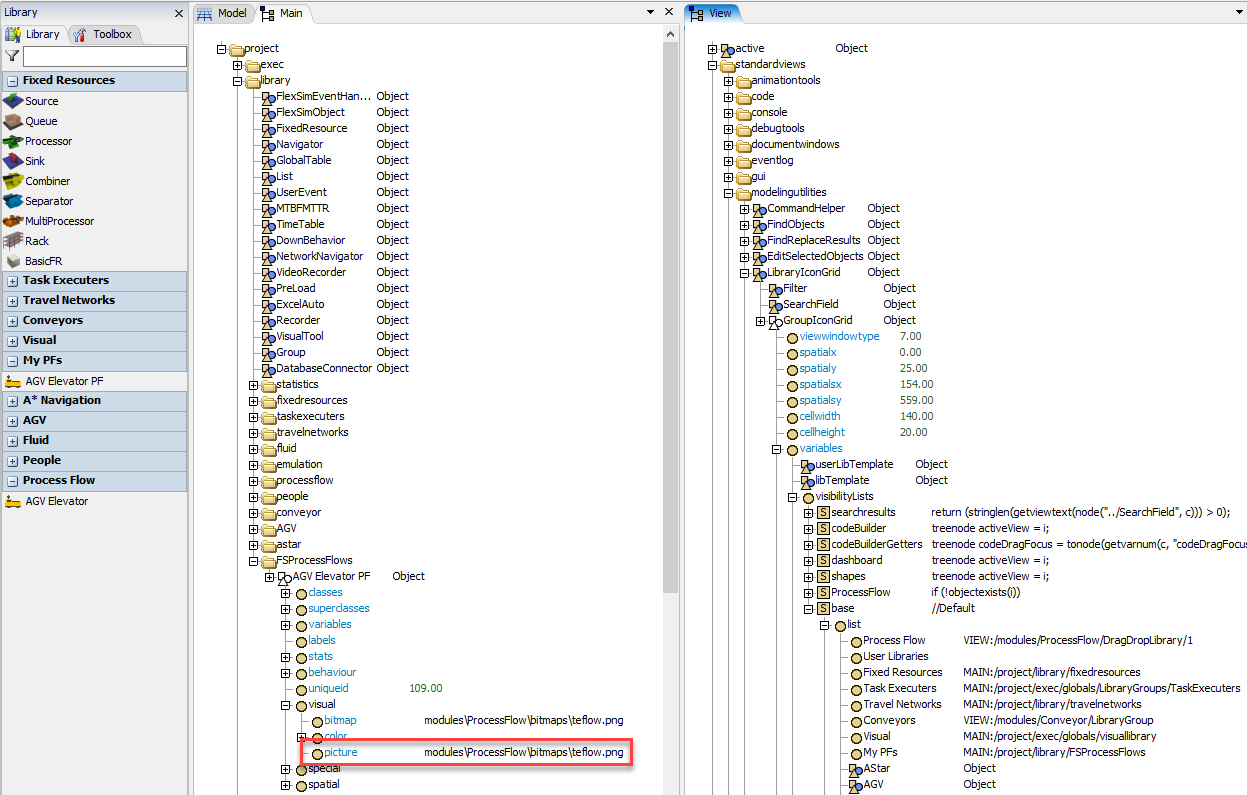Hello,
As discussed in this thread, we are trying to save all our custom treenodes in a module.
There's a few reasons for this choice: Libraries are stored as hexadecimal, are not loaded at FlexSim startup. And by the way, we already have a module in which we have some C++ code.
So, we are trying to store objects, processflows and lists in this module.
As @phil.bobo explained yesterday, it is quiet easy to put objects.
I tried the same with a processflow (the "AGV elevator" just to give a try)
- I copied its tree in "MAIN/project/library/FSProccessFlows/"
- I created a new node in "VIEW:/standardviews/modelingutilities/LibraryIconGrid/GroupIconGrid>variables/visibilityLists/base/list" pointing on "MAIN:/project/library/FSProccessFlows"
At this stage, I expect to find a "FSProcessFlows" category in the sidebar which contains a processflow.
Instead, the category is actually empty and an unexpected one appears.
This new category called "Process Flow" and contains "AGV Elevator" which looks like this.
Finally, what we need is an easy and reproducible procedure to export all our objects of any kind (I will not be the only one to work on this project in a near future).
What I actually miss, with modules instead of libraries, is that attached processflows are exported with objects on which they are attached.
Is there a way to do this with the module ?
And for lists ?
Is there another object type I didn't mentionned that will be tricky to save in module ?
Thank you in advance !
PS: sorry for my bad english :sigh:





